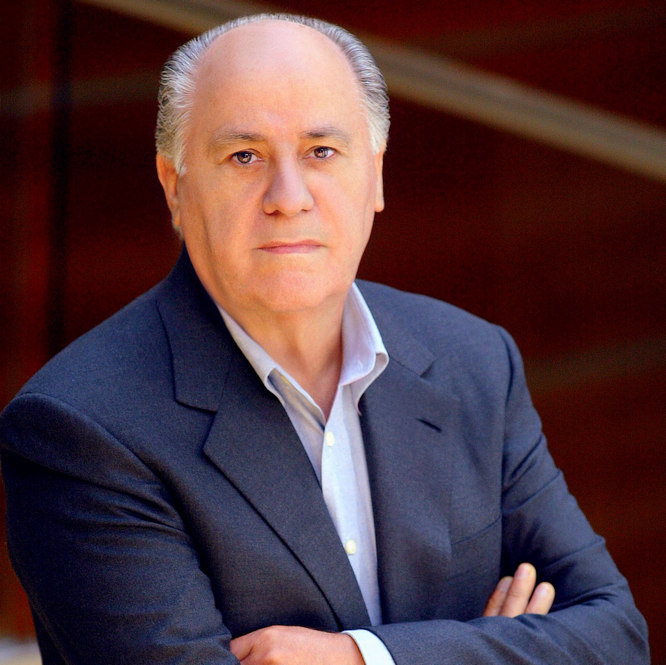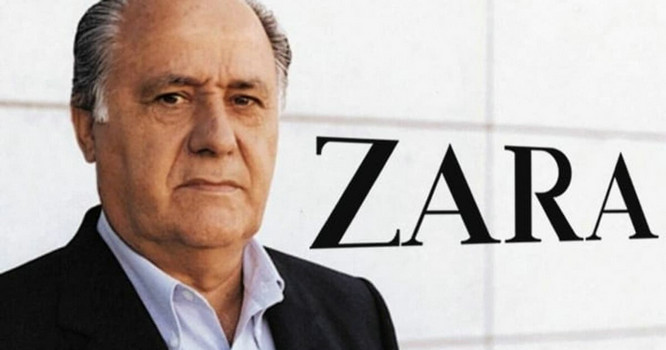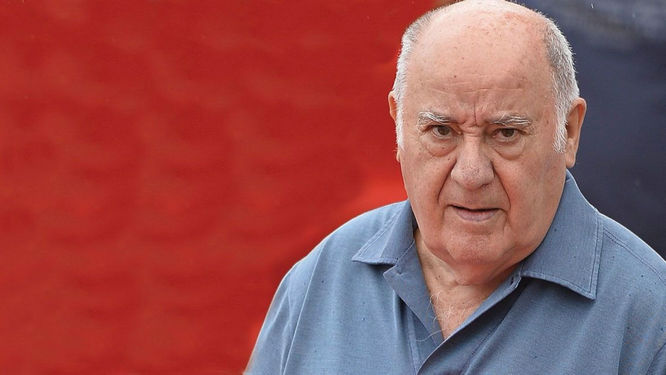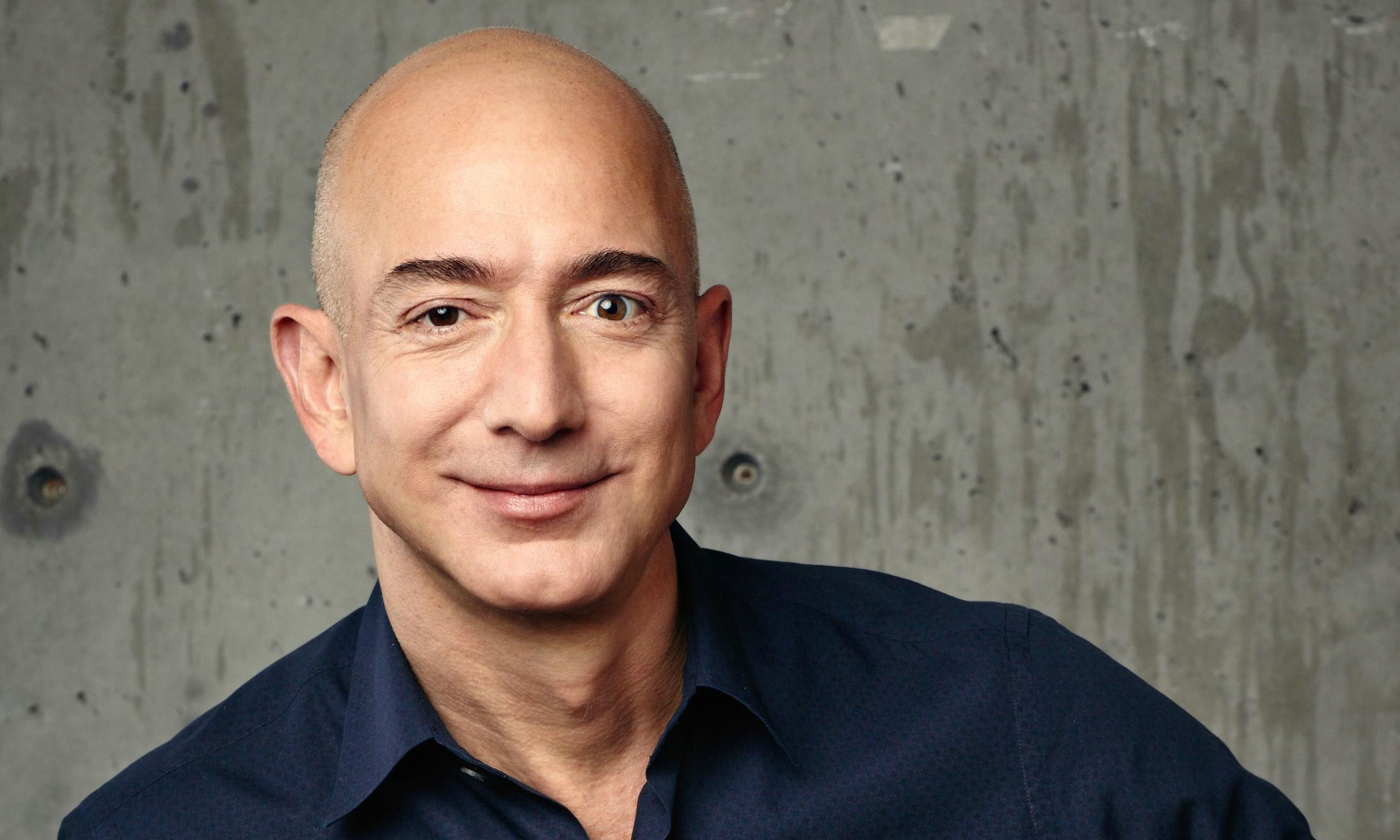In the annals of fashion and entrepreneurship, the name of Amancio Ortega reverberates with a kind of quiet power and restrained elegance. As the mastermind behind the globally renowned brand Zara, Ortega, with rare foresight and meticulous craftsmanship, has transformed the industry landscape, making himself not only a billionaire but also a self-made legend.
Born in Spain, Ortega's story begins humbly. He learned sewing skills from his mother since childhood, and this craft became the bond between his dreams and reality in the future. The journey to the forefront of the global rich list did not start from the executive office but slowly set off in the humming of sewing machines and the rustling of fabrics.

"Success is not only based on dreams; it is the fabric of hard work and perseverance." - Amancio Ortega
In 1946, in La Coruña, Spain, in an ordinary working-class family, the story of Amancio Ortega slowly unfurled. The young Ortega spent a lot of time beside his mother's sewing machine. Those days were simple but sowed the seeds of his initial love and understanding of the textile industry. His mother's diligence and ingenuity became his earliest mentor. "I understood from an early age that meticulousness and efficiency are the souls of clothing making and also the cornerstone of business," Ortega recalled later.
At the age of 13, Ortega left school and started working in a shirt store, which became the starting point of his awakening business sense. He observed that the slow pace of the traditional clothing industry could not meet the increasingly changing consumer demands. Ortega decided that there must be a faster way. "Fashion should not wait for the season; it should follow the heart," he secretly vowed.
In the early 1970s, a chance trip made Ortega discover that the fashion styles on the streets of Paris changed rapidly, while the Spanish market was relatively lagging. He realized that shortening the time difference from design to sales would be the key in the future. This insight became the prelude to the birth of Zara. Ortega began to plan a new retail concept. "What I want to do is to make fashion accessible, as natural as daily life."
In 1963, the then 27-year-old Ortega and his wife founded Confecciones Goa, a small women's clothing production workshop. Here is the stage where he first practiced his dream. He insisted on "equal emphasis on speed and quality" and quickly responded to customer needs, and this concept was extremely reflected in Zara in the future. Ortega began to realize that speed is the new battlefield in the clothing industry.
In 1975, Ortega opened the first Zara store in La Coruña, marking the prologue of the fast fashion era. The core of Zara lies in "rapid response", from design to store in only two weeks, far faster than the six-month cycle of traditional brands. Ortega's famous saying "Fashion should not wait; it should jump on the streets" has become the creed of Zara.
The success of Zara is not accidental. According to the data, from the late 1990s to the 2000s, the annual average growth rate of Zara's sales was as high as 20%, and in 2004, it already had more than 600 stores worldwide. Ortega's strategy lies in vertically integrating the supply chain, fully controlling from design, production to distribution, ensuring the realization of the rapid response mechanism.
Ortega's wisdom lies in insight into consumer psychology. There are new arrivals in Zara stores twice a week, encouraging the consumption impulse of "buy now". At the same time, the strategy of a small number of multiple styles reduces the risk of inventory and ensures the freshness of products. Ortega's famous saying "Predicting is not as good as responding" is the essence of the Zara model. It does not predict fashion but responds to fashion quickly.

"We don't predict fashion; we respond quickly."
In 2008, when the global financial tsunami was raging and the global economy was mired in the quagmire of panic and recession, the fashion industry was also facing an unprecedented winter. As early as when the cloud of the financial crisis first loomed, Ortega had shown his foresight. He once emphasized in an internal meeting: "The market is always changing, and stability is more lasting than radicalism." It is precisely this cautious attitude that made Zara begin to adjust its strategy before the crisis came, strengthened its financial health, and maintained sufficient cash flow to prepare for the upcoming challenges.
When the crisis fully erupted and many retailers shrank their frontlines and cut costs, Ortega made a counter-intuitive decision: "When others are afraid, we have to see opportunities." Zara quickly adjusted its product line, reduced the proportion of high-end products, and instead provided more cost-effective fashion items to meet the needs of consumers during the economic contraction period. At the same time, Zara accelerated inventory turnover and reduced slow-moving goods to ensure the smooth flow of funds.
The effectiveness of this series of strategies is clearly reflected in the data. According to the financial report of that year, when most fashion brands' revenues declined or even suffered losses, Zara's sales achieved a steady growth. Although the growth rate slowed down, it was enough to show its strong market adaptability. Ortega's strategy not only stabilized Zara's fundamental position but also won more market share in the market.
"The crisis is the touchstone of the enterprise." Ortega said when looking back on that period. His adhered business philosophy is even more prominent in the crisis: emphasizing efficiency, flexible adjustment, and being close to consumers. Ortega firmly believes that fashion is not a luxury but a way of life, and Zara's mission is to make more people enjoy this beauty, even in the economic trough.
This concept of Ortega runs through the operation of Zara all the time. This immediate response mechanism to the market enables Zara to capture consumer preferences faster than its competitors, thus rapidly expanding globally.

Massimo Dutti: The Elegant Revolution Under the Hands of Amancio Ortega
In the fashion kingdom of Amancio Ortega, Zara is famous worldwide with its fast fashion label, while Massimo Dutti is a glittering pearl carefully carved by him, emitting the radiance of low-key luxury and classic elegance. In 1988, when the wave of fast fashion was sweeping the world in the name of Zara, Amancio Ortega was nurturing another blueprint in his heart - a fashion brand for the mature and those who pursue quality and style. Massimo Dutti came into being. It is not only a brand but also Ortega's unique understanding and interpretation of advanced casual style. "Fashion is not only about popularity, but also the expression of taste," Ortega said.
The core of Massimo Dutti lies in its persistence in quality and meticulous carving of details. From the selected fabrics to the exquisite cutting, each product is a tribute to the elegant attitude towards life. The brand is good at integrating modern elements into the classics, allowing tradition and innovation to coexist harmoniously, meeting the pursuit of tasteful life of urban elites. Ortega once emphasized, "In Massimo Dutti, what we sell is not just clothes, but a philosophy of life."
Ortega's business wisdom is also reflected in the global expansion strategy of Massimo Dutti. Different from Zara's rapid expansion, Massimo Dutti has taken a steady and sure route, carefully selecting store locations, focusing on brand image and shopping experience, ensuring that each store can become a perfect showcase window of the brand concept. As of 2021, Massimo Dutti has more than 700 stores worldwide, and each one has become a gathering place for local tasteful people.
Data is the most powerful proof. Under Ortega's leadership, Massimo Dutti has not only achieved remarkable results in brand loyalty, but also has a remarkable financial performance. According to the annual report of the Inditex Group, Massimo Dutti has maintained stable growth for many consecutive years. Even during the epidemic, it has shown strong pressure resistance ability, reflecting Ortega's keen insight into market dynamics and timely adjustment of strategies.
The key to the success of Amancio Ortega's business empire lies in that he is not only a keen businessman but also an insightful observer who deeply understands the psychology of consumers. The success of Massimo Dutti is the result of his profound understanding of the market segmentation needs and the provision of differentiated brand positioning. He firmly believes, "Fashion is flowing, but style is eternal." Massimo Dutti is the embodiment of this concept, an elegant symbol that is constant in change.

The Pull&Bear Fashion Cyclone Under the Hands of Amancio Ortega
In 1991, when Zara was making waves on the global stage, Amancio Ortega keenly sensed the potential trend pulse in the young people's market. He wanted to create a brand that not only reflects the free spirit of youth culture but also has a sense of fashion. So, Pull&Bear was born and came with a brand-new interpretation of young fashion. "Fashion is the language of youth," Ortega defined.
Pull&Bear, regarded by Ortega as a testing ground for trends, a place of continuous exploration and innovation. The brand designs products full of vitality and creativity inspired by street culture, music, and art, quickly capturing the hearts of young consumers. Ortega believes, "Trend is not to follow, but to create." The launch of each season's new products of Pull&Bear is a challenge and breakthrough to the fashion boundary.
Under Ortega's helm, Pull&Bear is not only at the forefront in design but also leads the way in digital marketing. The brand actively embraces social media, using platforms such as Instagram and TikTok to have a direct dialogue with young people and creating a highly interactive community sense. According to the data, the activity and fan growth of Pull&Bear on social media are remarkable, showing its strong appeal in the digital age.
It is worth noting that while Ortega led the rapid development of Pull&Bear, he also did not forget about sustainable development. The brand promised to reduce the environmental footprint and launched series of products made of eco-friendly materials such as organic cotton and recycled fiber clothing. Ortega once said, "The future of fashion is green." This concept has been fully demonstrated in the practice of Pull&Bear, winning the respect and resonance of young consumers.
The story of Amancio Ortega and Pull&Bear is about understanding and guiding young culture, and it is a double chapter of innovation and responsibility. The wisdom of Ortega lies in that he is not only a fashion shaper but also a listener of the times. He deeply knows the desires and expectations of the young generation and responds to the desire for fashion freedom and environmental protection with Pull&Bear as the carrier.
Conclusion: The Future of Elegance
Ortega is notoriously low-key. He rarely accepts media interviews, avoids public appearances, and prefers to let the products and performance speak for themselves. His wealth and influence, just like himself, are silent but powerful, the product of business wisdom and continuous innovation. The story of Amancio Ortega is a lesson for all dreamers and entrepreneurs: In this rapidly changing world, only by continuous learning, rapid adaptation, and continuous innovation can we weave our own glorious chapter in the fierce market competition.
